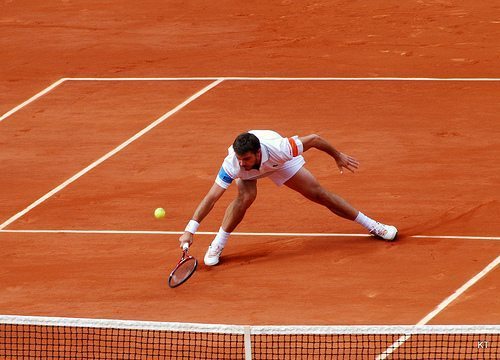Wawrinka beats the tennis elites to Australian Open win
The dominant ‘big four’ of Roger Federer, Rafael Nadal, Novak Djokovic and Andy Murray have done so much in the way of owning the ATP tour that for the last nine years it has seemed like the rest of the top 100 have been playing a different game.
Between them they share 36 of the last 38 Grand Slam titles. Tipping any player outside that upper echelon to take a major would ordinarily seem ambitious, unfounded and far too romantic for reality. So when their authority is sincerely questioned, as when Stanislas Wawrinka clinched the Australian Open title one week ago, it becomes very tempting to see those chinks in the armour of the elite as yawning, compromising caverns.
Murray has dropped to sixth and Federer to eighth in the ATP rankings, while Nadal and Djokovic suffered streak-breaking losses at the hands of lower-ranked Wawrinka. Is this the end of the top four as we know it?
In the middle two weeks of January, Stan ‘the Man’ played top-level tennis. That much is certain.
He stood strong on the baseline, injected variety into his ferocious backhand and pushed his game to victory with the mental fortitude of a champion.
Impressive, yes, but completely unexpected? Not entirely.
What nobody saw coming, however, was what happened next. After brushing aside higher-ranked Tomáš Berdych, Iron Stan set himself up for a clash with Rafael Nadal, who was competing for his 14th Grand Slam title.
For a brief moment in this year’s tennis calendar, the Swiss will become a household name: that guy who beat Nadal and Djokovic on his way to glory
Pre-match punditry touted that if Wawrinka could play consistently and control baseline exchanges, he might see himself taking a set.
Nadal had recently seen off the now sharp Roger Federer in straight sets and had earlier played what critics called the best match of his career against Frenchman Gael Monfils. Victory for the Spaniard seemed inevitable.
And yet the unfathomable happened. But why? And how? Did Wawrinka find some key to unlocking the mystery of tennis’ legends? Perhaps.
Unfortunately, it was a final marred by the misfortune of injury which saw Nadal break down in tears and serve limply into the net like a child at the park.
Whether or not Stan would’ve gone on to lift the Norman Brookes Challenge Cup if Rafa was fighting fit is another article in itself, but the Spaniard’s decline in form certainly gave his competitor the space he needed to swing harder, serve smarter and oust the world number one.
Undoubtedly, Wawrinka’s victory is a step forward in the world of tennis. For a brief moment in this year’s tennis calendar, the Swiss will become a household name: that guy who beat Nadal and Djokovic on his way to glory.
Is this a transition into a new era for the sport, one characterised by more open competition?
I’m not convinced. Whilst we should of course celebrate the success of the underdog, we can’t ignore the circumstances that led to such a shock victory.
It wasn’t ideal for the competition as a whole that Nadal, Federer and Murray all wound up in the same half of the draw. Of these three, Nadal struggled with a nasty blister and back pain. Murray had recently returned from major back surgery and Federer was testing the waters with new coach Stefan Edberg. These are issues that will surely be ironed out as the weeks progress though, and we might expect to see a return to business as usual.
The situation echoes Juan Martin del Potro’s success at the 2009 US Open, which similarly opened the floodgates of discussion surrounding the infallibility of the very best. Some expected a new era of tennis back then. It’s taken five years and a whole lot of luck for it to even come close to happening again.

Comments